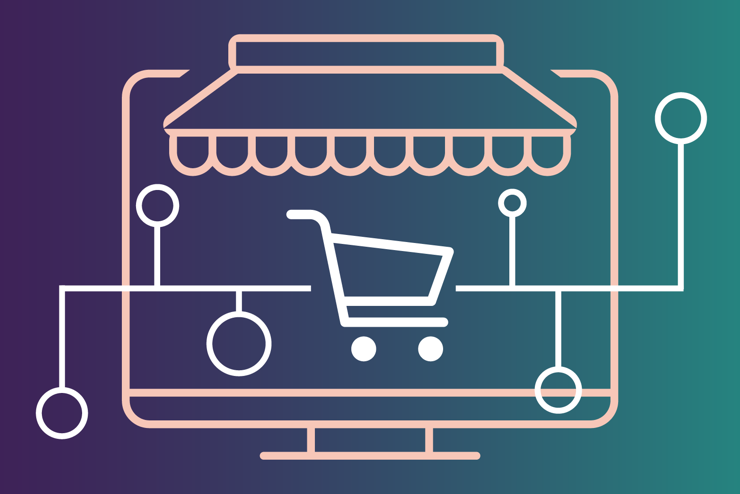Pro Info For Selecting Sellvia Shopify Dropshipping Services
Pro Info For Selecting Sellvia Shopify Dropshipping Services
Blog Article
How To Evaluate The Customer Support And Service Specifications Of An Amazon Seller Or Shopify Service For Dropshipping To Us Markets
Examining Support and Customer Service Features that allow dropshipping to U.S. market on Amazon Seller, Shopify, and WordPress (WooCommerce) is vital since customer satisfaction is contingent on prompt and responsive support, fast communication, and dependable issues resolution. Here's how you can evaluate the customer support and support features of each platform.
1. Amazon Seller
Amazon's Customer Services Policies
Amazon has strict rules about how to communicate with customers. It's not easy to answer all queries from customers within all hours of the day.
Handling Returns and Refunds: Amazon's FBA program manages returns and customer inquiries in connection with fulfillment, which saves time for FBA sellers. Merchant Fulfilled Network sellers will need to manage refunds, inquiries, as well as returns in-person. This will require strong customer service procedures.
Support for Sellers:
Seller Support Services Amazon offers seller support via its Seller Central platform. You can access FAQs, resources as well as live chat or email support to resolve issues like account management, ordering issues and policy questions.
Amazon makes sellers accountable according to metrics like Order Defect rate (ODR), and the time it takes to respond. Poor customer services can lead account suspensions. Therefore, it's important to provide reliable customer support.
Amazon Seller Evaluation:
Take a look at Amazon's Responsiveness Standards. Examine Amazon's standards regarding customer response time and determine whether you have enough bandwidth or the appropriate tools (such an automated response system) to meet those requirements.
Return Handling: Determine if you're using MFN, and also if your fulfillment partner or supplier offers assistance in handling returns. Amazon can handle returns for you when using FBA. You need to be at the forefront of issues to ensure your clients' satisfaction.
Customer Service Tools: Ensure you're familiar with Seller Central's tools for dealing with disputes, refunds, as well as general support inquiries. Third-party tools can help you meet Amazon's strict requirements for response time.
2. Shopify
Integrated Customer Support Apps
Shopify is integrated with Gorgias Zendesk and Re to offer customer support.
It provides dashboards that allow customers to effortlessly manage their inquiries via different channels, including email, chat and social media.
Automated communications: Shopify's apps include chatbots, automated responses or FAQs, which can help customers in finding rapid answers to their queries.
Shopify provides a range of messaging options that can be customized. For example, you can personalize emails for confirmations, abandoned-cart emails and follow-up messages. All these features will aid in building solid customer relationships and guarantee the highest level of satisfaction.
Order Tracking & Notifications
Shopify provides real-time updates to customers, which include updates on the status of their orders, tracking, and shipping. This increases transparency and reduces inquiries from customers on orders status.
Customer Order Status Page for Customer Order Status Shopify allows customers to view their order status on an order status webpage that reduces the requirement to contact support.
Shopify Evaluation:
Examine Available Apps: Evaluate applications for customer support, such as Gorgias which integrate directly with Shopify and provide an omnichannel customer service. This will save time handling customer requests.
Shopify provides a range of options for personalizing chatbots, email templates and automated responses. This will allow you to deliver prompt and timely interactions with your clients.
After-Sales: Ask for assistance in customer support. This can include returns labels or a refund process which is simple to complete using third-party applications. Shopify's integrations can simplify the return process and improve customer satisfaction.
3. WordPress (WooCommerce),
Customer Service Plug-ins
WooCommerce integrates directly into plugins for your website, including LiveChat as well as Zendesk. These tools let customers use service tickets, live chat, and knowledge bases.
Automated Chatbots to provide quick answers you can utilize AI chatbot plug-ins (e.g. Tidio, ChatBot), which automatizes customer interactions and increases the speed of response.
Email Notifications WooCommerce offers customized emails for order confirmation, shipment, and delivery, to provide customers with access to their orders.
Order tracking and returns Management:
Order Tracking Plugins, such as TrackShip permit customers to view real-time information about their orders through your website. This can reduce the number of inquiries related to an order.
Returns & Refunds WooCommerce has customizable refund and return policies. WooCommerce also offers plugins to automate returns, including WooCommerceRMA. This feature allows you to manage refunds and returns in a an efficient way.
WooCommerce Assessment steps:
Select reliable Customer Support plugins: Compare plugins like live chat, ticketing, and chatbots. WooCommerce is popular with LiveChat that integrates customer support features.
Automated Communication and Tracking Make sure order tracking and status updates are accessible for customers to access, as this reduces inquiries about the status of an order. TrackShip is a tracking plugin allows you to send out automated notifications.
WooCommerce provides you with the flexibility to set the return and refund policies. Return handling plugins will make the experience for your customers more enjoyable. Follow the best Sellvia reviews for site guide including ecommerce and dropshipping, good items to dropship, good items to sell online, ecommerce business, ecommerce business, build an online shop, web business for sale, sale business online, make a online shop, opening e commerce business and more.
How Do You Assess Customer Feedback & Customer Service
It is important to assess customer feedback and support for dropshipping platforms, such as Amazon Seller, Shopify and WordPress (WooCommerce). This will ensure a positive experience for both sellers and customers. Each platform has different levels of support and feedback mechanisms that can influence customer satisfaction and business success. Here's how you can examine these elements across the three platforms.
1. Amazon Seller
Customer Feedback Mechanisms for Customer Feedback
Amazon's Product Reviews and Ratings allows customers to rate products and write reviews. Feedback is important for the brand's reputation and could have a profound influence on sales. High ratings enhance visibility and credibility.
Sellers' Feedback: Buyers who provide reviews directly to sellers can influence their overall rating as well the metrics of performance. Negative feedback is a regular problem and can lower your visibility or even cause account suspension.
Q&A Section: Customers can ask questions about products that sellers (and other customers) are able to answer. This section is a great way to build trust and clear up product information.
Customer Support Features
Amazon Customer Service: Amazon provides a robust customer service platform. Amazon manages all customer service for FBA orders. For orders that are fulfilled by merchants sellers are responsible for their own customer service.
Return Policy Amazon's return policies are easy to follow with straightforward return procedures that increase consumer confidence, however, it can create more difficulty for sellers in managing returns.
Seller Support Amazon offers a dedicated support for sellers, which includes tools in Seller Central for issues related to performance metrics, account health, and seller disputes.
Amazon Sellers' Assessment:
Examine the metrics of sellers. This will allow you to identify where to enhance. Aim for high ratings to increase your credibility.
Monitor Customer Reviews: Check reviews of your products and ask questions from customers often to make sure you are responding to concerns quickly and ensuring product quality.
Amazon Resources: Get to know the Amazon Seller Central support features. This includes performance alerts as well as resolution options.
2. Shopify
Customer Feedback Mechanisms for Customer Feedback
Reviews on Shopify Stores: Sellers may integrate customer review applications (e.g. Yotpo or Judge.me) that permit customers to post product reviews directly onto the product's pages. The feedback they leave can play a key role in driving sales as well as enhancing confidence.
Social Proof Shopify stores use testimonials, case study, and content from users on social media to leverage social proof. This increases credibility and draw new customers.
Shopify merchants may conduct a post-purchase survey to gather data on customer satisfaction. This can be used to make changes.
Customer Support Features
24/7 Support is available 24/7: Shopify offers support 24/7 via live chat, email as well as phone. Shopify provides 24/7 support to merchants, allowing customers to get assistance whenever required.
Shopify Help Center. A extensive resource center with tutorials, articles, and forums. It provides guidance on many aspects, including the setup of your store marketing strategies, store setup, and many more.
Shopify offers a range of apps to help with customer service (e.g. Zendesk or Gorgias). These apps assist to manage tickets, simplify customer inquiries and enhance communication.
Check-in Steps for Shopify Assessment:
Integrate feedback: Select the review application you wish to integrate and determine what you can do to get users to leave reviews after purchase.
Test support channels: Call Shopify Support for an assessment of response times and quality of service.
Help Center Resources: Get to know the Shopify Help Center so you can efficiently troubleshoot problems.
3. WordPress (WooCommerce),
Customer Feedback:
WooCommerce has a built-in review feature for products that lets customers to leave ratings and leave feedback. Sellers have the ability to moderate reviews for accuracy and quality.
Feedback Plugins: Many WooCommerce stores use plugins to provide improved review system (e.g., the YITH WooCommerce Advanced Reviews) or feedback forms that permit precise customer input.
Social Media Integration - WooCommerce stores allow their customers to share their reviews on social networks and then share them on their pages for products in order to boost credibility.
Customer Support Features
WooCommerce's users are heavily reliant on documentation, community forums as well as other methods of self-service support to resolve issues. WooCommerce Help Docs can provide comprehensive assistance, however they might not be able to help at the same speed as Shopify.
A lot of WooCommerce sellers utilize managed hosted services to provide support to their customers. The quality of customer support can vary widely between hosting providers.
WooCommerce's support systems are customizable, allowing sellers to choose how they want to respond to customers who contact them.
WooCommerce evaluation steps:
Examine Review functionality. Make sure that all features used for product reviews are enabled. If required, you can install additional review plugins in order to improve feedback mechanisms.
Test Hosting Support. If you're managing your hosting, you should test the support team to determine how quickly they respond and what quality of assistance they provide.
Create an automated Customer Support System: You can integrate an online helpdesk or ticketing system to manage customer queries more efficiently. Take a look at the top rated Sellvia for blog info including website business for sale, free dropshipping, dropshipping products, sellvia login, ecommerce store, online selling items, trending ecommerce, winning products, make a online shop, free dropshipping and more. 